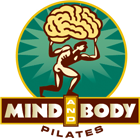For years I have not done Bicep Curls. You know – the dumbbells in the hands as you bring them up to your shoulders, either alternating arms or both arms at the same time. They are not part of the Pilates repertoire and Crossfitters definitely make fun of them saying they are not functional movements and silly. And for years I said the same thing.
Not so any more. It started when I realized that in spite of my Pilates and Crossfit workouts, I was not building the kind of body I wanted. I admit it, I am shallow enough to say I wanted pecs and biceps. And it wasn’t happening. So I thought, “Screw it, I am going to go back to old school bicep curls to pump up my arms”. And so I started with 15#ers and worked my way up.
Naturally, I brought my Pilates brain to the exercise. So I made sure that I wasn’t swinging my body around to do the exercise. I kept my body in good alignment and didn’t let my elbows either brace against my rib cage nor move from their starting position. And what did I discover (to my chagrin)? The shoulder stabilization that takes place during a correct (in my opinion) bicep curl is amazing and incredibly valuable.
Most of us in our modern world are pulled forward too much in our shoulders so our rotator cuff muscles and the shoulder blade stabilizers are weak because they are in a too-lengthened position for them to work effectively. But if you stand up straight, pull your abs in and, without moving your at your elbows, do a bicep curl, your shoulder stabilizers will be the muscles that fail first. The rhomboids, traps, rear deltoids as well as rotator cuff muscles will get a terrific workout. Triceps will also work.
If I allow my body to swing around and use momentum to do the curls, I could probably use 45# dumbbells. But doing them correctly? I am back at 25# in order to do a set of 8 or so (per arm). They are hard! I can feel all of this terrific shoulder blade stabilization that is so important for good posture. Yes, my biceps fatigue and they are getting a workout but how amazing to feel my back working so well and so right. Yes! it feels right – like this is the way my upper body is supposed to function.
And so bicep curls are back. For me and for my clients. We work hard at shoulder stabilization in all planes of movement. And if you think this stabilization is not functional, think again. When my clients are lifting up their babies (or holding anything out in front of you for that matter), those exact shoulder stabilizers must ‘kick in’. When carrying a laundry basket full of laundry, those muscles need to work. If you’re carrying anything heavy out in front of you – whether a sofa or a load of lumber, the stabilizers must work.
Lesson learned. Try it. Feel it. Analyze those feelings. Question your previous assumptions and understandings. And then evaluate. I found that bicep curls are not nearly as silly as I thought. On the other hand, “there is no bad movement, there is only movement done badly.” (Ron Fletcher – original Pilates master teacher)

